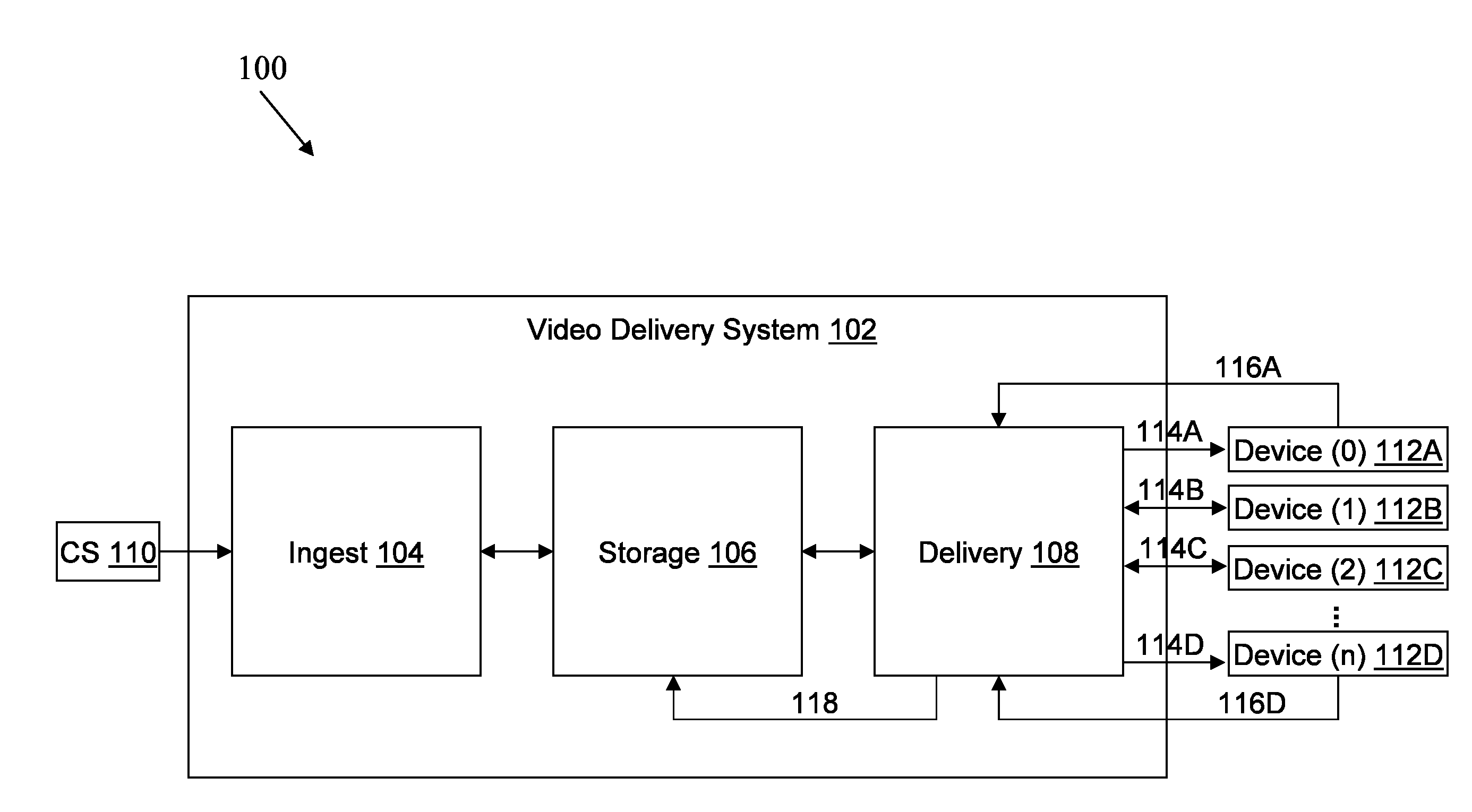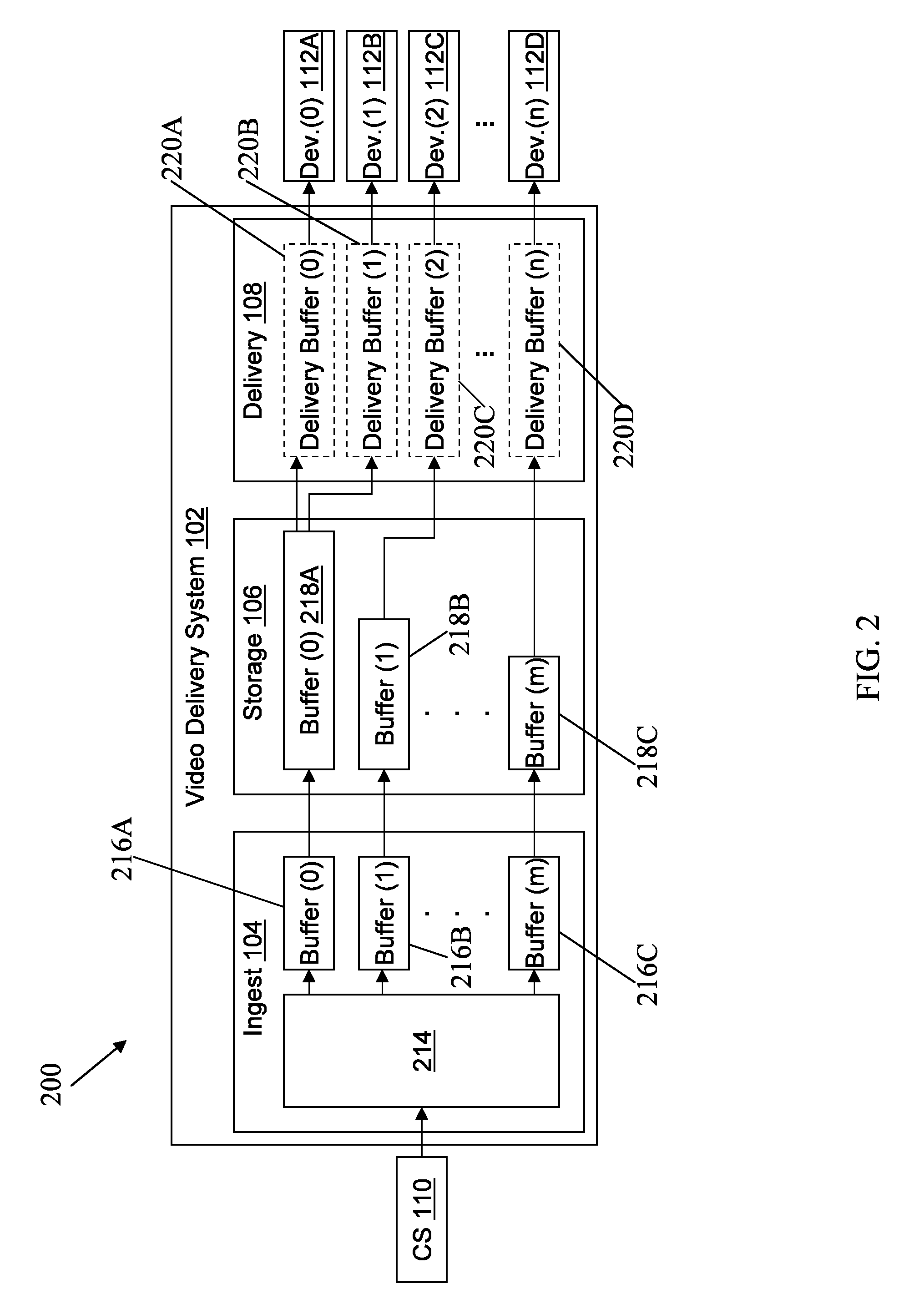Deterministically skewing synchronized events for content streams
a technology of synchronized events and content, applied in the computer field, can solve the problems of limiting the number of unique video programs that can be broadcast (or transmitted) at any one time to homes, affecting the success rate of the content stream, so as to reduce the peak bandwidth requirement, reduce the load on the signaling control, and improve the success rate
- Summary
- Abstract
- Description
- Claims
- Application Information
AI Technical Summary
Benefits of technology
Problems solved by technology
Method used
Image
Examples
Embodiment Construction
[0050]In general overview, signaling requests are distributed over a larger window of time, so that a video delivery system can respond to more subscriber requests with less observable delay. This is done by staggering the delivery of per-subscriber unicast video over a larger window of time than naturally occurring (e.g., even if from the same source). Advantageously, the number of simultaneous signaled events or content processing events (e.g., ad insertions) can also be spread over the same window of time (i.e., a larger averaging window), reducing the peak rate of requests and processing load. Although the specification describes these techniques mostly in terms of the subscriber, the techniques described herein work equally as well on individual devices, such as STBs.
[0051]FIG. 1 is an exemplary diagram 100 illustrating a video delivery system 102. The video delivery system 102 includes the ingest module 104, storage module 106, and delivery module 108. Content stream 110 is re...
PUM
 Login to View More
Login to View More Abstract
Description
Claims
Application Information
 Login to View More
Login to View More - R&D
- Intellectual Property
- Life Sciences
- Materials
- Tech Scout
- Unparalleled Data Quality
- Higher Quality Content
- 60% Fewer Hallucinations
Browse by: Latest US Patents, China's latest patents, Technical Efficacy Thesaurus, Application Domain, Technology Topic, Popular Technical Reports.
© 2025 PatSnap. All rights reserved.Legal|Privacy policy|Modern Slavery Act Transparency Statement|Sitemap|About US| Contact US: help@patsnap.com



